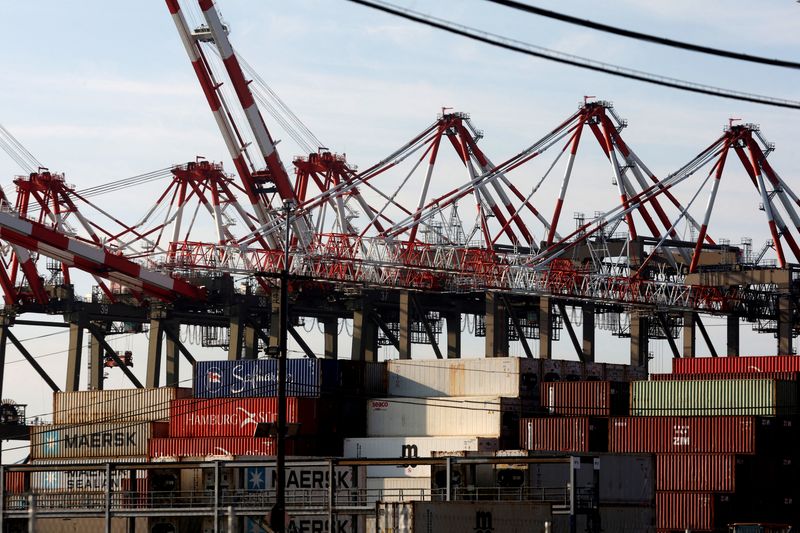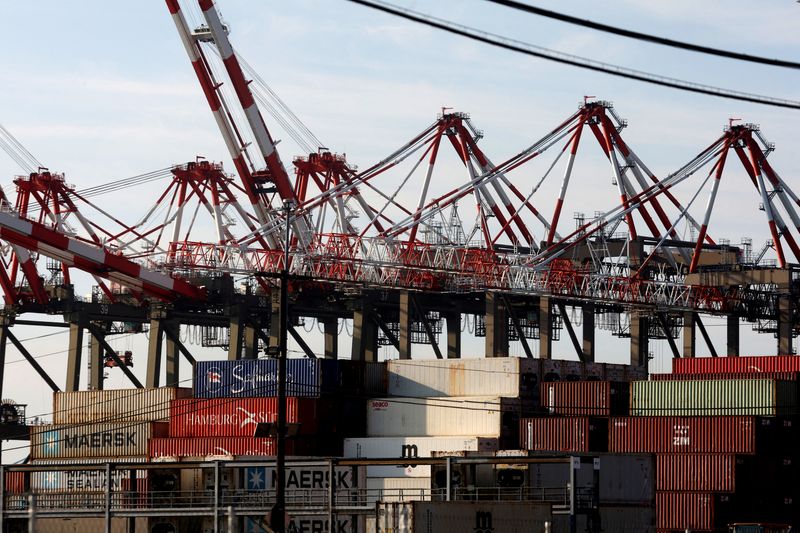
By Lisa Baertlein and Daniel Wiessner
LOS ANGELES (Reuters) – A tentative labor deal forestalled potentially damaging trade disruptions at three-dozen U.S. East Coast and Gulf of Mexico ports, with both sides in the talks crediting President-elect Donald Trump for clearing the way for them to hammer out a deal on automation.
The success of the International Longshoremen’s Association in winning Trump’s support for its anti-automation battle could be instructive for unions facing contract renewals during his term, including the United Auto Workers, UPS Teamsters and the U.S. West Coast’s International Longshore & Warehouse Union.
The deal, announced on Wednesday night, must be ratified by some 45,000 members of ILA and the United States Maritime Alliance (USMX) employer group.
“This is a six-year détente in the tech-versus-labor tug-of-war at U.S. ports,” said Judah Levine, head of research at Freightos, a freight-booking and payments platform.
It landed days before an extended Jan. 15 deadline, averting a second strike that could have put a huge dent in the economy at the start of Trump’s second term on Jan. 20.
Father-and-son ILA leaders Harold and Dennis Daggett late on Wednesday called Trump a hero to the union and gave him “full credit” for the resolution of talks.
They pointed to a Truth Social post in mid-December, where Trump appeared to side with the union’s struggle against “foreign” employers after meeting with those ILA leaders.
“I’ve studied automation and know just about everything there is to know about it. The amount of money saved is nowhere near the distress, hurt and harm it causes for American Workers, in this case, our Longshoremen,” Trump wrote.
The employer group, which includes Maersk’s APM Terminals and the U.S. arms of major container carriers such as China’s COSCO Shipping, said the agreement came “thanks in large part to President Trump’s leadership.”
The ILA and USMX extended their bargaining deadline after a deadlock over automation sparked a three-day strike in October at major ports including New York and New Jersey, Houston and Savannah, Georgia.
President Joe Biden played a vital role in helping workers win a 62% raise over six years, which ended the October strike.
Biden praised both the union and employers for reaching a tentative deal on Wednesday. Trump has not commented on Truth Social and his transition team did not immediately comment.
One pro-labor attorney cautioned against interpreting Trump’s post on automation as union support, saying that it was in keeping with his pugilistic approach to international policies.
“It supports his narrative of going after foreigners,” said Cathy Creighton, an attorney and director of Cornell University’s School of Industrial and Labor Relations in Buffalo.
SEEING THE FUTURE?
In a prescient move, Teamsters President Sean O’Brien – who negotiated the last contract for members at United Parcel Service (NYSE:UPS) – notched a union first by speaking at the Republican National Convention, where he praised Trump’s toughness. The Teamsters also broke with tradition and did not endorse a U.S. presidential candidate last year. The UPS contract expires in 2028, Trump’s final year in office.
Pro-union attorneys said Trump’s track record is not one of union support.
During his first term as president, Trump’s appointees to the National Labor Relations Board issued a series of rulings seen as favoring businesses and making it more difficult for unions to organize workers. The board enforces workers’ rights to organize and join unions and investigates allegations that employers have engaged in unlawful labor practices.
In December, Trump threatened to fire federal workers who do not return to the office for work. He also tasked Elon Musk, the world’s richest person who has called the NLRB unconstitutional, with slashing the federal budget.
“I don’t think he’s going to support the labor movement,” attorney Creighton said of Trump. “He has sought to undermine the labor movement.”

